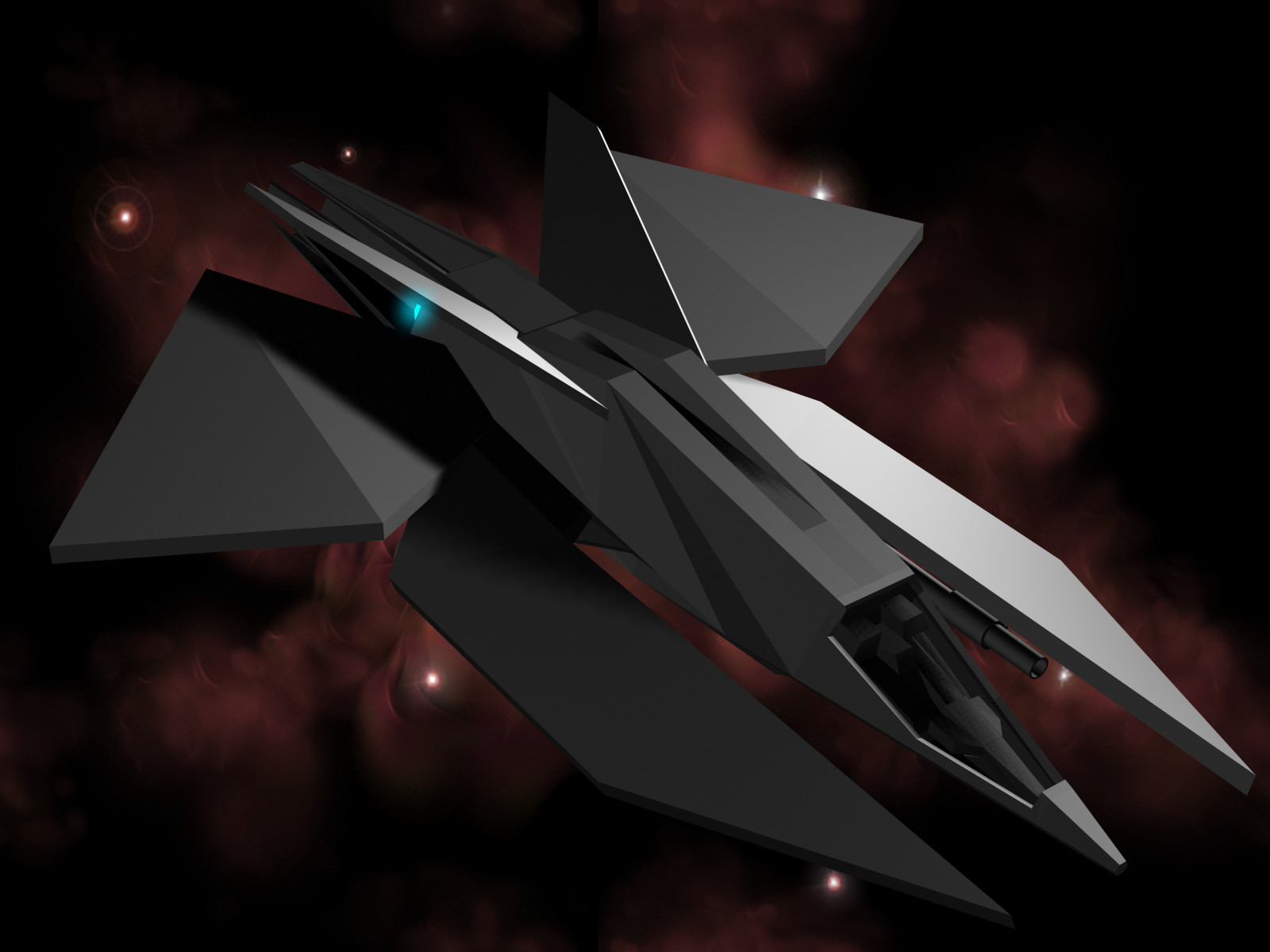HOME | DD
 FatalPapercut — F-179 Arika Interceptor
FatalPapercut — F-179 Arika Interceptor

Published: 2008-09-16 18:41:03 +0000 UTC; Views: 845; Favourites: 6; Downloads: 7
Redirect to original
Description
F-179 Araika Interceptor - FrontHistorical Notes:
Up until the Solstace Wars, space travel was a harsh and dangerous endeavor, requiring expensive hardware and highly trained individuals to accomplish even the most mundane and routine of tasks. However, as tension over territories and resources mounted, the need of governments and corporations, later to be called Priors, to put the common soldier back on the frontlines mounted as well. Cue the onset of more easy to maintain, combat ready and user-friendly spacecraft, modeled more after oceanic sailing ships than as was previously customary.
Even with this technological revolution, space battles were still limited to one-to-one ship slug fests, as propulsion and weapon systems were simply to big to fit on anything smaller than a frigate. After the Wars concluded, though, a second technological renaissance finally lead to the miniaturizing of essential components that would allow for ships that could be piloted by a single individual.
Notes:
The F-179 Araika interceptor is the USEC's mainstay fighter, designed primarily to counter other strike craft.
The F-179 is an incredibly fast, agile platform, thanks to large boost pods to the left and right of the main engines. Too small to carry their own onboard JumpDrive, they must be transported and launched from a carrier ship. Interceptor Strike Craft squadrons consist of five fighters per wing, and travel in tight formation, rarely breaking apart. Commonly, they are used to focus fire on a single target to speed up destruction, but each fighter is capable of engaging on its own in a timely manner.
Interceptors are usually launched from their carriers en masse at the beginning of engagements and separate from the capital ships, engaging one another in what are known as 'fighter clouds'. Once all the fighters on one side are destroyed, the remaining fighters move into the capital ship battle, and begin attacking subsystem targets, such as propulsion, shield generators, power supply, and the like.
Interceptors are less likely to inflict critical damage to capital ships then tactical bombers, but a pair of forward facing G3 Micro beam cannons mounted under the wings can still provide formidable attack power, fed by a large internal power generator. The F-179s are also equipped with a quartet of twelve tube anti-fighter QARAAM (Quick All Range Anti-Armament Missile) pursuit launchers concealed within the hull for performing high speed strafing runs through fighter clouds or against static targets.
Despite their capabilities, interceptors do not exist without their own natural enemies. Unless taken out quickly, the specially designed anti-fighter corvette gunship can easily chew through interceptor squadrons. Also devastating to interceptors are Raider class cruisers, capital ships designed to engage strike craft.
In case of extreme damage to the main hull, the cockpit can be ejected and double as a lifepod. The emergency life supports are capable of sustaining a pilot awake and alert for three days before the pilot is put into a state of suspended animation. From there, if the pilot has still not been recovered, they can be kept alive for approximately one month, after which the power systems shut down, killing the occupant.
Using combat data gathered from the F-179 Araika and the A-220 Rosenthal, The USEC would eventually go on to roll out the FA-354 Aaliyah Strike bomber.
Armament:
-G3 Micro Beam Cannon (2)
-QARAAM Pursuit Launcher (4)
Alternate Views:
Back
Profile
Cockpit Open
Related content
Comments: 7

Whew...i was a bit afraid this one was gonna meet with some harsh criticism.
Glad you like it.
👍: 0 ⏩: 1

Sorry, don't mean to be the critic so much...
Anyways, I love the concept of the fold down controls encasing the legs.
👍: 0 ⏩: 1

Yeah, that actually came about when i went to put a person in the seat to see how it would fit, and i realized that it would be awkward as hell trying to slide legs under the center console. So i broke the console off the cockpit block, capped off the hole in the bottom, and moved the pivot point.
I wish i could get back in there and detail it like your Wasp, but i guess this will have to do for now.
👍: 0 ⏩: 1

And i appericiate your insight on my work. Your near-future tech is actually helping me remain quasi-realistic, instead of constantly half-assing things and saying "No, thats just how it is in the wayyyyy far future"
I dont get many comments on my stuff, so its refreshing to hear an outside opinion
👍: 0 ⏩: 1

Glad I could help! You do the same for me, by cross-examining me on tech. Its cool to get to hear from someone who thinks things out as thoroughly as I do.
When doing military stuff, function dictates form. So tech commentary and ergonomics and such play an important part.
👍: 0 ⏩: 1

Agreed. Although without an interesting form, nobody's going to care much about function, so i guess it cuts both ways.
I think some of my more recient designs (See corvette gunship ) have become a bit more detailed then my older ones. The interceptor here is actually about as old as the destroyer, if you can tell from how the polygons are cut across the outer hull.
I guess i still need a bit of work on getting the form to more smoothly match the function
👍: 0 ⏩: 0

























